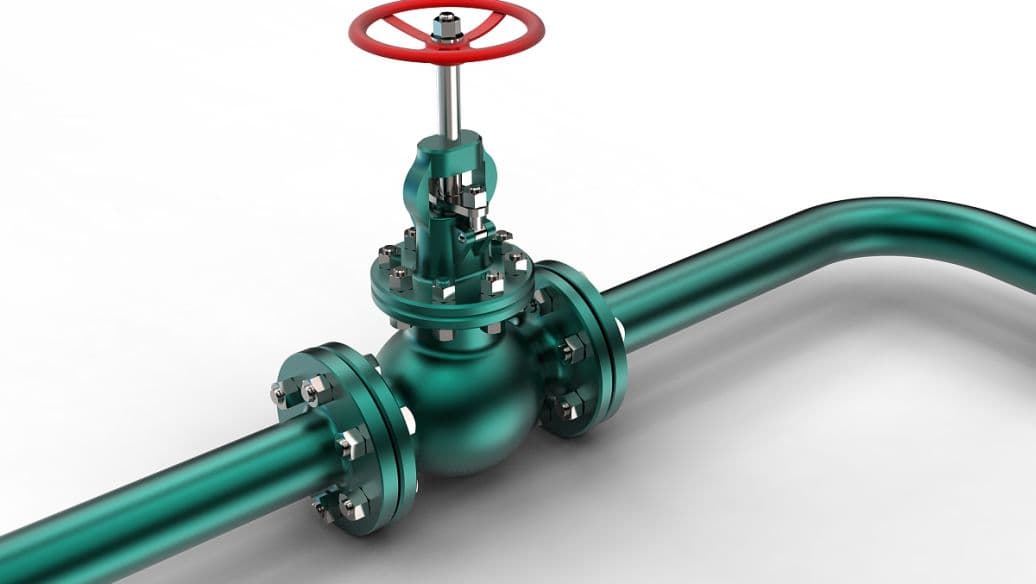Orifice flow meters and wedge flow meters belong to the type of constant cross section and differential pressure flow meters. In other words, they share the same concept.
An orifice flowmeter involves inserting a circular plate with a hole in the middle into a pipeline and then measuring the vapor pressure difference before and after the orifice plate. The vapor flow rate is then calculated based on this data.
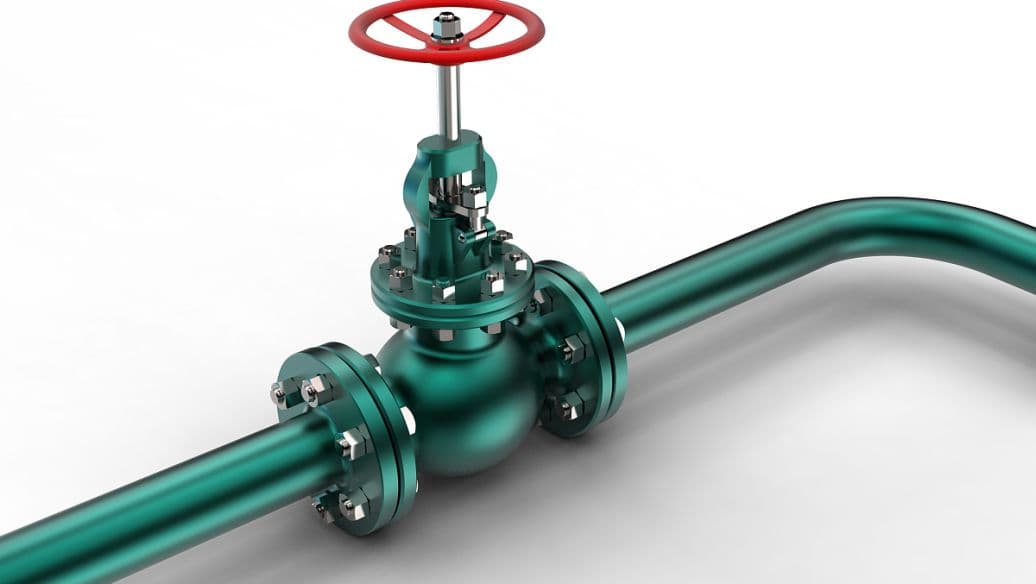
As the steam flow is contracted at the orifice plate, the static pressure decreases and the flow rate increases, resulting in a pressure difference before and after the orifice plate. According to the continuity equation (law of conservation of mass) and Bernoulli's equation (law of conservation of energy), the flow rate is proportional to the pressure difference: M2∝ΔP, where M is the flow rate and ΔP is the difference depression .
The pressure difference signal is transmitted to a differential pressure transmitter via impulse lines and then sent to a flow integrator, which calculates the flow rate based on the pressure difference signal. Additionally, steam temperature and pressure are measured by temperature and pressure sensors, and the flow integrator calculates the compensated flow rate based on the current temperature and pressure.
A wedge flow meter works by restricting fluid flow with a wedge, creating a pressure difference upstream and downstream of the wedge that is proportional to the square of the flow rate. This pressure difference is obtained from two pressure taps on each side of the wedge and sent to a differential pressure transmitter to convert it into an electrical signal output. This signal is then processed by a specialized flow integrator to determine the flow rate.
Why choose an orifice flow meter
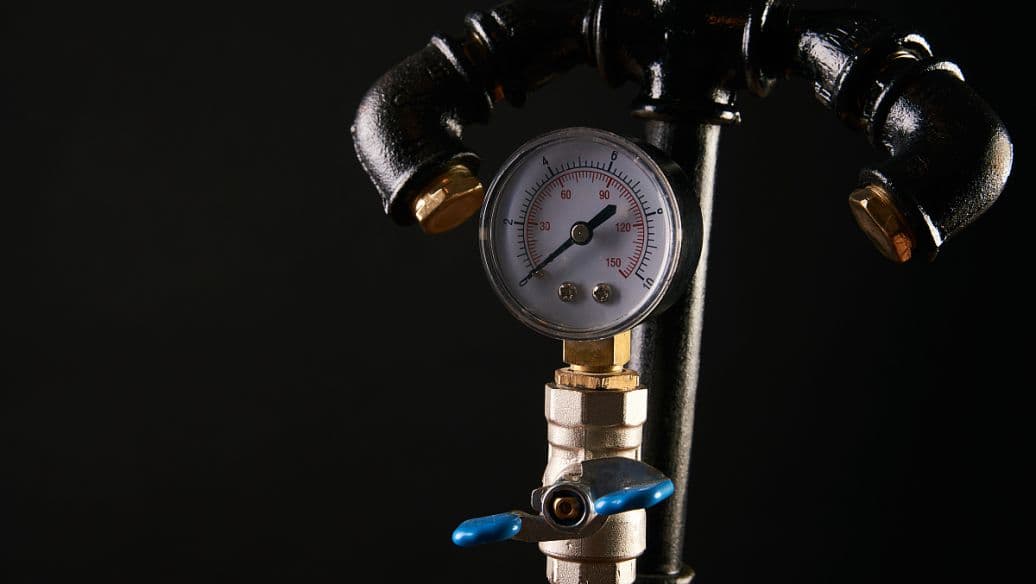
Benefits:
- The structure of the throttling device is easy to replicate, simple, robust, and has stable and reliable performance with long service life.
- It is suitable for measuring larger diameter pipelines (currently orifice flowmeters are generally the only option for pipelines with a diameter greater than DN 600 mm).
- Durable and long-lasting.
- Comprehensive calibration.
- Affordable price.
Disadvantages:
- High requirements for the installation of the throttling device, impulse lines and condensate containers, making the installation more complex.
- It is difficult to calibrate the entire orifice flowmeter as a whole. Currently, only the differential pressure sensor, pressure sensor and temperature sensor can be calibrated individually, making it difficult to guarantee overall accuracy.
- The orifice plate structure causes a significant reduction in static pressure and a significant increase in flow rate, leading to severe erosion of the orifice plate and a decrease in accuracy over time. In the case of measuring the flow of liquefied gas, propylene and other easily vaporized liquids, changes in the physical properties of the fluid can cause even more severe erosion of the orifice plate.
- The orifice plate structure results in a significant loss of static pressure after the fluid passes through, making the orifice flow meter a high power consumption instrument. This increases the loss of mechanical energy for pumps and motors, which does not lead to improved system energy efficiency and is a disadvantage for increasingly stringent energy saving requirements.
Why Choose a Wedge Flowmeter
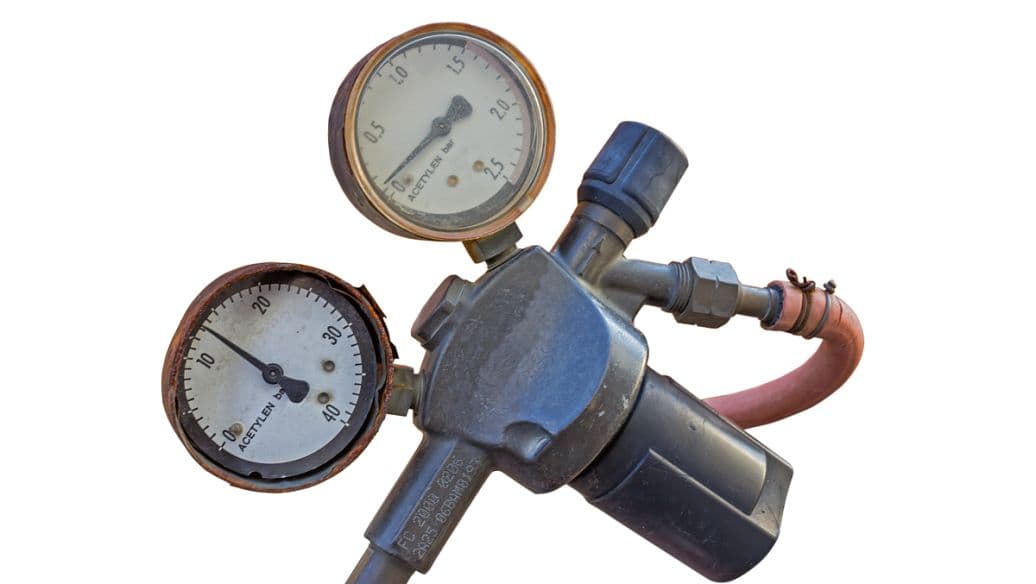
Benefits:
- Particularly suitable for measuring media with high viscosity, low Reynolds number, suspended particles or bubbles.
- Measurement accuracy is not affected by the dielectric constant or other properties of the fluid.
- The special design of the wedge-shaped component has a deflection effect to prevent clogging.
- Compensation function for changes in fluid viscosity, temperature, density, etc.
- Vibration resistant, shock resistant, dirt resistant and corrosion resistant.
- It has a bidirectional flow measurement function.
- Energy saving and emission reduction: Wedge flow meters have simple and robust structure, high reliability, easy installation and low operation and maintenance costs.
- No moving parts or wear and no need for recalibration during long-term use.
Disadvantages:
Compared to orifice flow meters, wedge flow meters have the disadvantages of higher price and require individual calibration for each unit. In terms of design, manufacturing, calculation, installation and use, wedge flow meters still lack corresponding data and standards.
Summary: Currently, wedge flow meters and orifice flow meters coexist and utilize their respective strengths. However, in the long term, wedge flow meters are the development trend of the new generation of differential pressure flow meters.
Precautions for installation
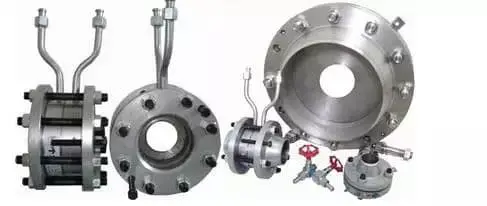
10 precautions for installing an orifice flow meter:
- Before installing the instrument, the process piping must be cleaned to prevent ferromagnetic substances from adhering to the instrument, which could affect the instrument's performance or even damage it. If unavoidable, a magnetic filter must be installed at the instrument input. The instrument itself must not be blown with air before being put into operation to avoid damage.
- The instrument must be checked for damage before installation.
- The instrument can be installed vertically or horizontally. If installed vertically, the angle between the instrument centerline and the vertical line must be less than 2°. If installed horizontally, the angle between the horizontal center line of the instrument and the horizontal line must be less than 2°.
- The piping upstream and downstream of the instrument must have the same diameter as the instrument. The flanges or threads used to connect the piping must match the flanges and threads on the instrument. The upstream straight pipe section must be at least five times the nominal diameter of the instrument, and the downstream straight pipe section must be greater than or equal to 250 mm.
- Since the instrument signal is transmitted through magnetic coupling, there must be no ferromagnetic substances within 250px around the installation to ensure the performance of the instrument.
- If the instrument measures gas, it will be calibrated at a specific pressure. If the gas is discharged directly into the atmosphere through the instrument outlet, it will cause a pressure drop in the float and distort the data. If this is the case, a valve must be installed at the instrument outlet.
- The instrument installed in the pipeline must not be subjected to tension. The inlet and outlet of the instrument must have suitable tube supports to maintain the instrument in a state of minimum voltage.
- When installing a PTFE-coated instrument, special care must be taken. Under pressure, PTFE will deform, so flange nuts should not be tightened too tightly.
- Instruments with LCD screens must be installed to prevent direct sunlight from reaching the screen and reducing the lifespan of the LCD.
- When measuring low temperature media, a jacketed type must be selected.
28 Precautions for Installing Orifice Plate Flow Meter
- The orifice plate flow meter should not be installed in the formed pipeline.
- Attention should be paid to the length of the straight section of the pipe before and after the flow meter.
- For electromagnetic and mass flow meters with grounding requirements, grounding must be carried out in accordance with the instructions.
- During the pipeline welding process, the grounding wire must avoid the instrument body to prevent the grounding current from flowing through the instrument body and damaging the instrument.
- During the welding process, ground current must not pass through the capillary pressure tube of the single or double flange instrument.
- For medium and high pressure guide pipes, argon arc welding or socket welding can be used. For wind speeds >2m/s, windproof measures must be taken. If the wind speed is >8m/s, welding must be stopped.
- Pay attention to the installation direction of the pressure tapping device of the orifice plate flow meter.
- Stainless steel pressure guide tubes are strictly prohibited from being heated or flattened.
- The installation position of the instrument pressure guide tube, air duct and passing tube should avoid hindering the process production operation in the future, avoid corrosive and high temperature places, and should be firmly fixed. The lowest end of the conductor tube, from top to bottom, must be lower than the wiring entry of the connected instrument. Y-shaped or conical explosion-proof gaskets should be added near the side of the instrument. The lowest point of the instrument's main air duct must have a condensation (pollution) valve.
- Copper joints used in instruments must be annealed before use, and attention must be paid to the permissible temperature, medium and pressure conditions of joints of various materials.
- Different grounding systems cannot be mixed in the instrument junction box. The shielding wires of all instruments must be connected separately to the upper and lower shielding layers and must not be twisted together.
- If the instrument is in an inconvenient position for observation and maintenance, change its position or install a platform.
- There should be no joints in the instrument wires and hidden recordings should be made. Welded or pressure connections must be used to compensate for wire joints.
- Stainless steel welds must be pickled, passivated and neutralized.
- For instruments and accessories that require degreasing, degreasing must be carried out strictly in accordance with specifications. After degreasing, sealing and storage of instruments and accessories must be done carefully to avoid secondary pollution during storage and installation.
- Stainless steel pipelines are strictly prohibited from direct contact with carbon steel.
- Galvanized and aluminum alloy cable trays are strictly prohibited from electric welding, gas cutting and drilling. Instead, mechanical cutting and punching tools such as saw blades and special punching machines should be used.
- Stainless steel pipes are strictly prohibited from electric welding, gas cutting and punching. Instead, plasma or mechanical cutting and drilling should be used.
- For instrument passage pipes in explosion-prone areas, electrical continuity must be maintained. Conductive paste must be used for the thread of the grounded instrument passage tube. The conductor tube thread less than or equal to 36V must be at least rust-proof. The exposed thread must be no larger than a thread.
- For explosion-proof areas, instrument passage tubes must maintain electrical continuity.
- The insulation resistance of instrument lines below 100 V must be measured with a 250 V vibration meter and must be ≥5 megohms.
- Aluminum alloy cable trays must be connected with short-circuit wires, while galvanized cable trays must have at least two anti-loose screws tightened. For cable trays with a length of less than 30 meters, both ends must be reliably grounded, and for trays with a length of more than 30 meters, a grounding point must be added every 30 meters.
- When instrument lines from different grounding systems or instrument lines share the same cable tray, a metal divider must be used to separate them.
- It is strictly prohibited to use gas welding methods during the installation and processing of instrument panels, cabinets, boxes and tables. Welding should not be used for installation and fastening, and mechanical drilling methods should be used to open holes.
- The blunt end of the heat tracing and instrument return should not be greater than 100 mm.
- A pipe cap must be added to the discharge port of the transmitter drain valve to prevent valve leakage, especially in explosion-proof areas.
- One end of the instrument and its cable tray, impulse tube and pressure tube must be fixed in the thermal expansion area (such as towers and accessories that move with the thermal expansion of the tower), and the other end must be fixed in the area non-thermal expansion area (such as labor protection rooms). When connecting the instrument, flexible pipes, cable trays and impulse pipes must be left with a certain thermal expansion tolerance according to the actual situation on site.
- The cable trays and conduits fixed to the tower must be equipped with thermal expansion joints or flexible connections according to the actual situation on site.
4 precautions for installing and using wedge flow meters:
- Install according to the direction indicated on the wedge flow meter
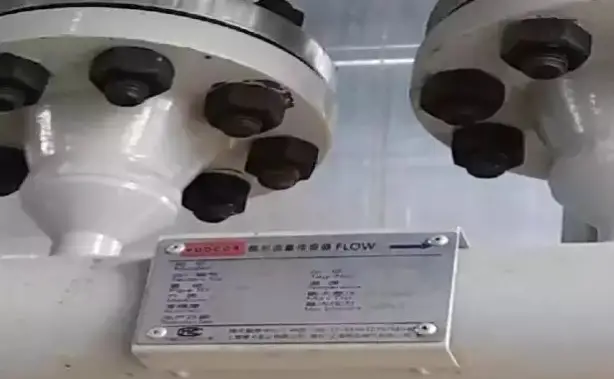
Although some articles and materials state that there is no direction requirement for installing wedge flow meters and that they can be used to measure reverse flow, the measurement principle of wedge flow meters shows that if a standard wedge V shape is used, the throttling of the fluid is the same for forward and reverse flow.
However, manufacturers label the fluid flow direction on the wedge flowmeter body. Looking at the two end flanges of the wedge flowmeter, the installation position of the wedge is not in the center of the wedge flowmeter.
Therefore, it is important to install the wedge flow meter in the direction indicated on the device to avoid increased measurement errors caused by incorrect installation direction.
- Pressure take-off interface direction
According to the pressure tapping guidelines for measuring instruments, when measuring gas flow, the pressure tapping interface is located at the center and top of the throttling element; when measuring liquid flow, the tapping interface The pressure tap interface is located in the middle and bottom of the throttling element, and when measuring dirty and contaminated media, the pressure tapping interface is located in the middle of the throttling element.
However, the wedge block of the wedge flowmeter is not evenly distributed in the internal chamber of the device, and the position of the pressure tapping interface has been predefined by the manufacturer, located above and below the welding of the wedge block on the device.
If the pressure tapping interface is installed at the middle and bottom of the pipeline when measuring liquid, the wedge block inside the wedge flowmeter will also be located at the middle and bottom of the pipeline.
This means that fluid must flow from the top of the wedge flowmeter, which can cause impurities to accumulate in the bottom of the device, leading to the risk of blocking the pressure tapping interface in front of the wedge block and causing measurement failure. . Therefore, during installation, it is necessary to differentiate according to the actual situation.
- Vertical piping installation
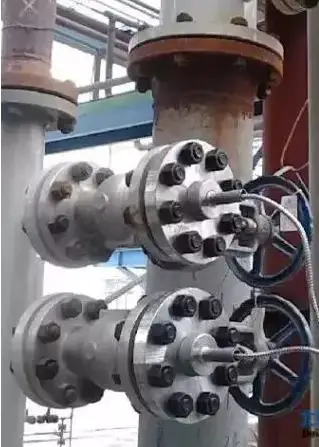
It is recommended to install the wedge flow meter horizontally and minimize the use of vertical installation because the zero point calibration of the wedge flow meter is difficult to perform in a vertical installation.
Zero point calibration of the wedge flowmeter requires that process medium fill the wedge flowmeter. After closing the valves before and after the pipeline, the flow meter must be calibrated, ensuring that the process medium inside the wedge flow meter is in a static state.
Because the throttling element flow measuring instrument generally does not design a secondary line removal installation, there are generally no process shut-off valves before and after the throttling element. In this situation, calibration of the wedge flow meter is more difficult.
If the wedge flowmeter is installed horizontally, we can assume that static fluid does not have an additional effect on the differential pressure detected by the wedge flowmeter.
Therefore, we only need to close the front and rear pressure take-off valves of the wedge flow meter and release them to the atmosphere to achieve the zero point calibration of the flow meter.
If the wedge flowmeter is installed vertically, a static static pressure will be generated in the cavity of the wedge flowmeter, which will increase the differential pressure value of the differential pressure transmitter in the positive pressure chamber and cause the value of the zero point differential pressure of the wedge flow meter is non-zero.
In addition, static pressure errors will be generated in the negative pressure measurement reference pressure tube. Therefore, zero point calibration is difficult at this time.
Even with a double flange transmitter, we can calculate the static pressure added by measuring negative pressure, but we can only calculate the density of the measured medium based on the ideal value during design.
Approximately calculating the static pressure inside the wedge flow meter and making calibration reviews will reduce zero point reliability.
Therefore, in practical installation, it is better not to install the wedge flow meter vertically. If the process does not meet the requirements for horizontal installation, in addition to ensuring that the wedge flow meter is filled with process medium, we must also accurately calculate the modified pressure difference from the zero point during vertical installation. We cannot simply close the positive and negative pressure intake valves and perform zero point calibration.
- Drain and Pressure Relief Valve Installation
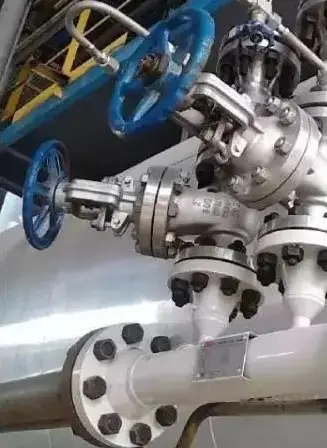
In the flow measurement mode of the wedge flow meter + double flange transmitter, a pressure relief and drain valve must be installed between the pressure take-off valve and the double flange connecting part.
This valve is very important. During the flow meter calibration process, it can ensure that the pressure between the positive and negative flanges is consistent with atmospheric pressure to ensure the reliability of calibration and also ensure the safety of maintenance personnel.
If the double flange transmitter is damaged and needs to be replaced, the pressure relief and drain valve can determine if the pressure take-off valve is leaking.
Only when safety is guaranteed can the double flange transmitter be removed. Many engineering installations omit the installation of the drain and pressure relief valve, which is incorrect and must be corrected.
Summary: Regardless of the type of flow meter, installation and use must be carried out in accordance with the manufacturer's instructions and taking into account its unique characteristics.
Technical specifications
Integrated Orifice Flowmeter Technical Specifications:
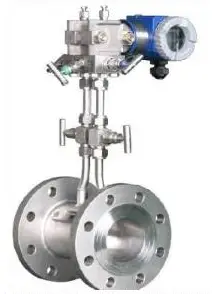
- High accuracy: 0.5%
- High stability: better than 0.1% Fs per year
- High static pressure: 40MPa
- No adjustments required for continuous operation for 5 years
- Negligible effect of temperature and static pressure
- High overpressure resistant
Flanged connection type (small diameter) (flange pressure socket):

- Connection: flat welding or butt welding flange (flange execution standard: JB/T8205-92)
- Medium: viscous liquid, dirty gas
- Pressure socket: flange pressure socket
- Accuracy: ±0.5%, ±1%
- Tube Size: 15-80mm
- Repeatability: +0.1%
- Pressure: 0-42MPa
- Range ratio: 10:1
- Temperature: -100 ~ 800 ℃
- Reynolds Number: 5×102-1×107
- Material: various materials
Forms
Orifice flow meter can be widely used for continuous measurement of volumetric flow or mass flow of various liquids, gases, natural gas and steam in industries such as petroleum, chemical, natural gas, metallurgy, electric power, pharmaceutical, food, pesticide , and environmental protection.
The wedge flow meter is a new type of throttle differential pressure flow measuring instrument.
It can accurately measure flow in high viscosity, low Reynolds number and 500 Reynolds number fluids and has incomparable advantages and irreplaceable functions in flow measurement applications with low flow speed, small flow and large diameter of tube.
In the petrochemical/coal chemical industry, wedge flow meters are commonly used in:
- Refining units and ethylene plants
- High viscosity and dirty media
- High temperature, high pressure and highly abrasive media
- Coal-water paste (black water, ash water), oil-coal paste, etc.

